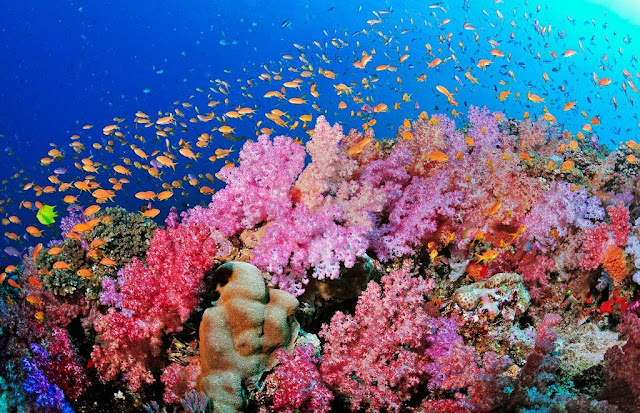The unexpected coral bounty means deep reefs have a richer biodiversity than thought.
Almost 200 species of Great Barrier Reef corals have found a second home in the deep ocean. That’s six times as many species as previously thought to be living in the dark, cold waters off northeastern Australia, researchers report December 11 in Proceedings of the Royal Society B.
Perhaps more important than the number of species cataloged at those depths is the fact that every coral evolutionary family is represented, offering a potential boon for conservation efforts.
“The deep reef is a lot more diverse and interesting than we thought,” says coauthor Paul Muir, a coral biologist at the Museum of Tropical Queensland in Townsville, Australia. “It’s a bit of a good news story, and there aren’t many of those around at the moment.”
As climate change makes some ocean waters warmer, corals are experiencing more frequent severe bleaching events than they did just a few decades ago (SN: 2/3/18, p. 16). Scientists are trying to learn which species might be able to survive, and where, as ocean conditions change.From 2010 to 2016, Muir and his colleagues sampled 1,263 corals at depths between 30 meters to 125 meters. That range falls within a region called the mesophotic zone because it receives relatively little sunlight. From those samples, as well as museum specimens and other data, the team identified 195 coral species living in this zone that were previously known to inhabit only shallow waters.
CORAL MENAGERIE About 45 percent of shallow water coral species that make up the Great Barrier Reef have also been found in the deep ocean, where sunlight wanes and temperatures drop.
The finding provides support for the “deep reef refugia” hypothesis, the hotly debated idea that deep ocean corals are somewhat protected from the effects of climate change and could one day help reestablish damaged shallow water reefs (SN Online: 7/19/18).
“We’ve shown that it’s potentially viable because there’s quite a wide range of species down there,” Muir says. But while researchers may know more about which corals can live in this deep ocean region, it’s unclear how common those corals are — or how they would fare if transplanted to shallower environments. “We’re keen on getting more data,” Muir says.
Source: Science News
Almost 200 species of Great Barrier Reef corals have found a second home in the deep ocean. That’s six times as many species as previously thought to be living in the dark, cold waters off northeastern Australia, researchers report December 11 in Proceedings of the Royal Society B.
Perhaps more important than the number of species cataloged at those depths is the fact that every coral evolutionary family is represented, offering a potential boon for conservation efforts.
“The deep reef is a lot more diverse and interesting than we thought,” says coauthor Paul Muir, a coral biologist at the Museum of Tropical Queensland in Townsville, Australia. “It’s a bit of a good news story, and there aren’t many of those around at the moment.”
As climate change makes some ocean waters warmer, corals are experiencing more frequent severe bleaching events than they did just a few decades ago (SN: 2/3/18, p. 16). Scientists are trying to learn which species might be able to survive, and where, as ocean conditions change.From 2010 to 2016, Muir and his colleagues sampled 1,263 corals at depths between 30 meters to 125 meters. That range falls within a region called the mesophotic zone because it receives relatively little sunlight. From those samples, as well as museum specimens and other data, the team identified 195 coral species living in this zone that were previously known to inhabit only shallow waters.
CORAL MENAGERIE About 45 percent of shallow water coral species that make up the Great Barrier Reef have also been found in the deep ocean, where sunlight wanes and temperatures drop.
The finding provides support for the “deep reef refugia” hypothesis, the hotly debated idea that deep ocean corals are somewhat protected from the effects of climate change and could one day help reestablish damaged shallow water reefs (SN Online: 7/19/18).
“We’ve shown that it’s potentially viable because there’s quite a wide range of species down there,” Muir says. But while researchers may know more about which corals can live in this deep ocean region, it’s unclear how common those corals are — or how they would fare if transplanted to shallower environments. “We’re keen on getting more data,” Muir says.
Source: Science News


Comments
Post a Comment